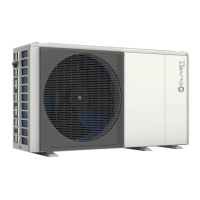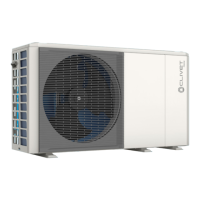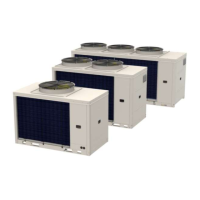158
Serviceman warnings
Particular attention must be paid to the following aspects to ensure that, when working on electrical com-
ponents, the casing is not altered to such an extent that the required level of protection is compromised, in-
cluding damage to cables, excessive number of connections, use of terminals that do not conform to original
specifications, damage to seals, incorrect assembly of glands, etc.
• Check that the device is securely mounted.
• Check that the seals or sealing materials have not deteriorated to such an extent that they no longer
guarantee a perfect seal keeping flammable atmospheres from entering. Spare parts must comply with
the manufacturer's specifications.
O
NOTE
the use of silicone sealants may make some types of leak detection equipment less eective.
11.11 Reparation of intrinsically safe components
Before applying capacitance or permanent inductance loads to the circuit, check that this operation does
not result in the permissible voltage and current values for the equipment in use being exceeded. Intrinsical-
ly safe components are the only types of components that can be operated under voltage in the presence
of a flammable atmosphere. The test device shall have the correct nominal characteristics. For component
replacement use only the parts specified by the manufacturer. Other components may cause ignition of re-
frigerant released into the atmosphere.
11.12 Wiring
Check that the wiring is not exposed to wear, corrosion, excessive pressure, vibration, sharp edges or other
adverse environmental influences. The control should also take into account the eects of ageing or contin-
uous vibration from compressors, fans or other similar sources.
11.13 Detection of flammable refrigerants
The use of potential ignition sources for the search or detection of refrigerant leaks is prohibited under any
circumstances. The use of halogen torches (or other open flame detection systems) is not permitted.
11.14 Leak detection methods
The following leak detection methods are considered acceptable for systems containing flammable refrig-
erants. Electronic leak detectors can be used to detect flammable refrigerants, but their sensitivity may not
be adequate or require recalibration. (Detection equipment must be calibrated in a refrigerant-free area.)
Check that the detector is not a potential ignition source and is suitable for the refrigerant. Leak detection
equipment must be configured at a percentage of the lower flammability limit (LFL) of the refrigerant and be
calibrated for the refrigerant used with confirmation of the appropriate gas percentage (max. 25%). Leak de-
tection fluids are suitable for use with most refrigerants but the use of chlorine containing detergents should
be avoided, as chlorine can react with the refrigerant and corrode copper piping.
If a leak is suspected, it is recommended to remove or extinguish all open flames. If there is a refrigerant leak
requiring brazing, all refrigerant must be removed from the system, or isolated (by means of shut-o valves)
in a part of the system away from the leak. The system should then be purged with oxygen-free nitrogen
(OFN) both before and during brazing.

